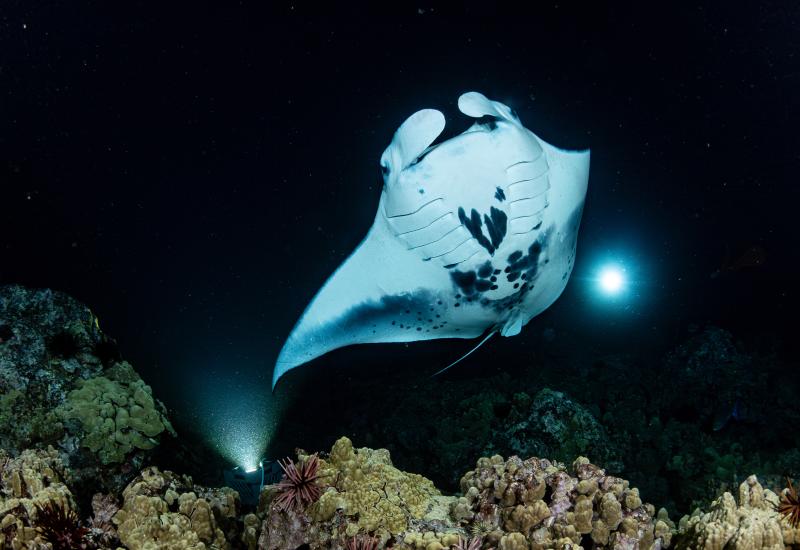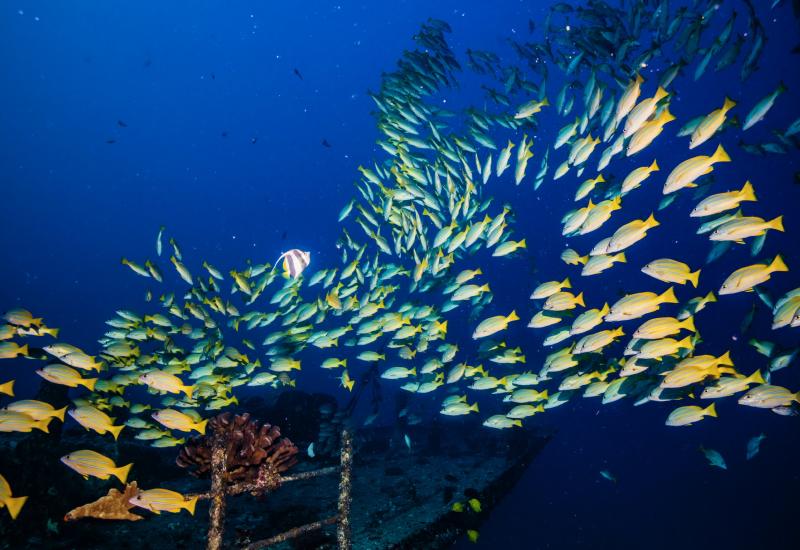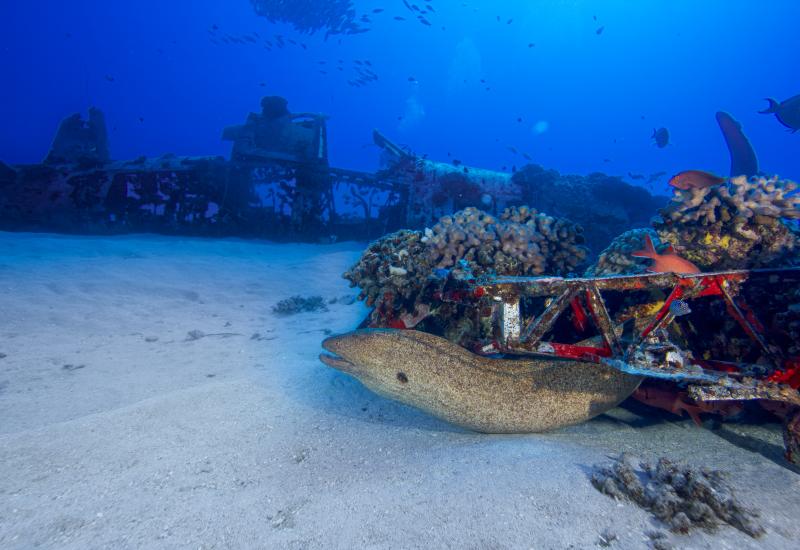The Heart of Fiji
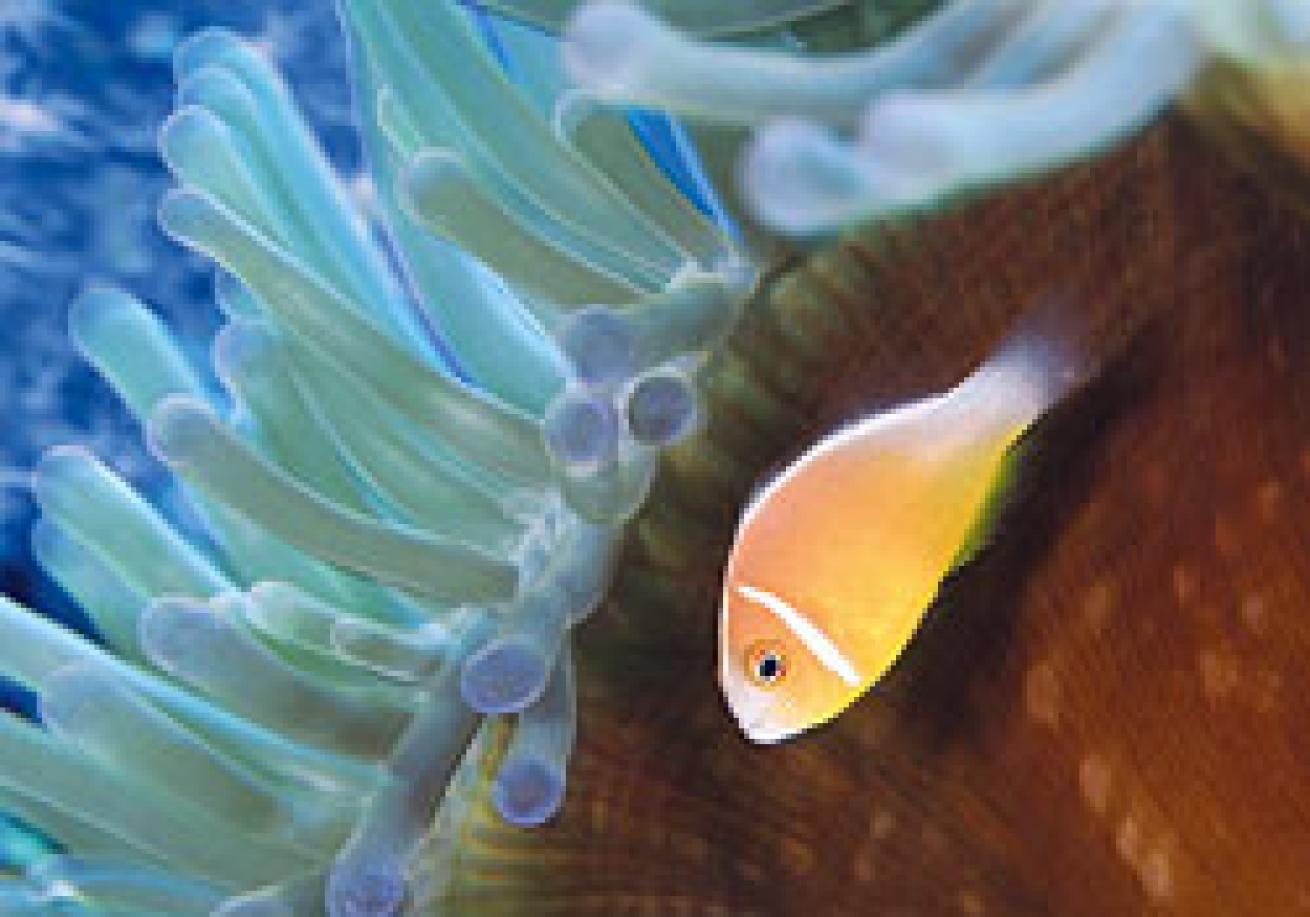
February 2008
By Andrew Wiens
Whenever people ask, "Where's your favorite place to dive?" my answer is always the same: "Fiji--because no matter how great I tell you it is, it will exceed your expectations."
There has never been a better time to dive this Pacific archipelago of some 300 islands scattered over one million square miles of ocean. There are plenty of options for getting here, staying here and diving here, but the islands are still blessedly free of the crush of cruise ships, wall to wall dive shops, jaded locals and overdevelopment. Add to the mix Fiji's fascinating culture, exceptionally friendly people and lush, mountainous topside landscape, then throw in for good measure the nearly 400 coral species and over 1,200 varieties of fish, and this island nation is quite possibly the perfect destination for divers.
In The Zone
The heart of Fiji diving is found in the Lomaiviti island group of the Koro Sea and Bligh Water (named for the captain of the infamous HMS Bounty). This zone--found roughly inside a triangle drawn between Taveuni Island, the village of Rakiraki on Viti Levu's north side, and the island of Beqa--offers an incredible wealth of diving on a network of barrier reefs, pinnacles and deep ocean cuts. With currents providing a steady flow of water across the reefs, you can expect to see prodigious fields of filter-feeding Dendronephthya soft corals in bright yellows, whites, reds and purples. Another given on almost every Fiji dive is abundant and diverse marine life ranging from colorful schools of anthias to pelagic hunters like sharks and rays.
Almost anywhere you choose to visit within this zone, you will find world-class diving and friendly, English-speaking people willing to share their unique culture. Here are a few of our favorites.
Lomaiviti Island Group and the Koro Sea
Lomaiviti literally means "central Fiji," and the cluster of volcanic peaks east of Viti Levu includes the major inhabited islands of Makogai, Wakaya and Gau. All the islands are ringed by healthy barrier reefs thriving in what is best described as a "sweet spot" for healthy coral and fish life. Tidal currents intensify as they pass through the islands, keeping a steady flow of clean, nutrient-rich water flowing to the hard and soft corals, and also bringing in abundant fish and invertebrate life. It helps, too, that the islands are the first major reef system where coral and fish spawn, carried by trade currents across thousands of miles of tropical Pacific, settle and begin to grow.
Dive Drill: The best way to see these world-famous reefs is by live-aboard. Hopping from island to island on a luxury dive yacht in search of the best reefs not only lets you cover the most ground, it also makes you feel like an explorer. You may not encounter another vessel during your journey through these remote, rarely visited reefs.
Bligh Water
Rakiraki is a small village on the north shore of Fiji's biggest island, Viti Levu. It's about a three-hour drive from the international airport in Nadi (pronounced NAN-dee), but more important, it sits front and center on some very impressive diving--an area known as Bligh Water. This swath of ocean between the large islands of Viti Levu and Vanua Levu is home to strong currents and lush reefs. The centerpiece of diving here is the narrow Vatu-i-Ra Passage, where a kaleidoscopic array of hard and soft corals, crinoids, anemones and sea fans cling to pinnacles or coral bommies as they are locally known. Schooling surgeonfish, fusiliers, barracuda, trevally and even the occasional shark patrol the deeper portions of the reef while the shallower zones buzz with the constant colorful activity of massive schools of anthias.
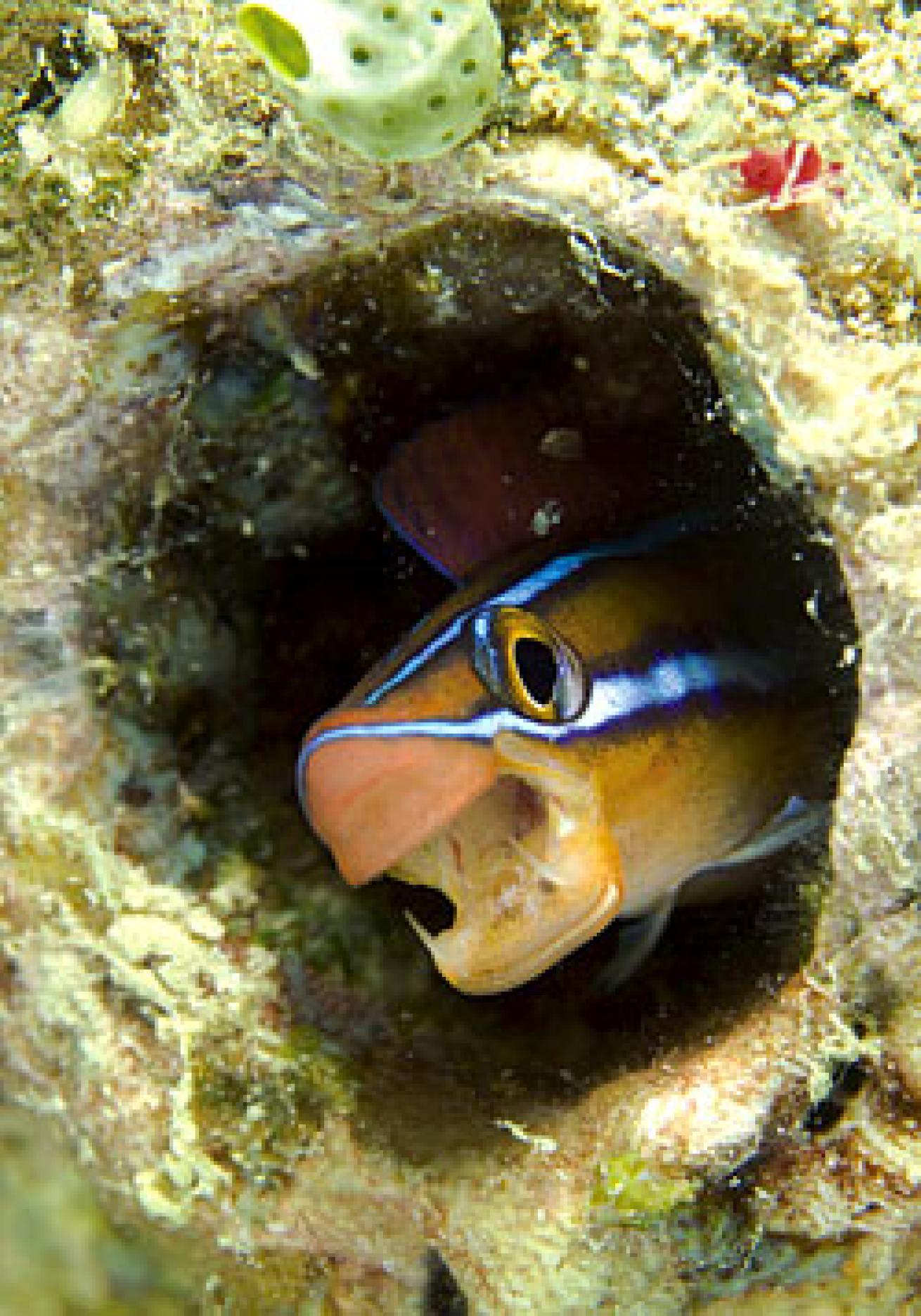
Dive Drill: For land-based operators, the Vatu-i-Ra Passage is about a 45-minute run and may be weather-dependent. Most make a day out of it, offering three-tank excursions with lunch on the boat. Live-aboards departing from Lautoka also transit Bligh Water, diving the best sites while en route to the Lomaiviti group.
Vanua Levu, Taveuni and the Somosomo Strait
The Somosomo Strait is the narrow channel that separates Vanua Levu from Taveuni, and with every tidal change the rush of water fuels lush soft-coral growth. On signature dives along Rainbow Reef and the Great White Wall, Dendronephthya soft corals cover nearly every inch of reef space. Day boats from both islands, as well as live-aboards, also visit the protected Namena Preserve. Topside, Taveuni is known as the Garden Isle of Fiji for its lush rainforest and magnificent waterfalls. A photo op not to be missed is the Wairiki Catholic Mission, a beautiful old church overlooking the Somosomo Strait.
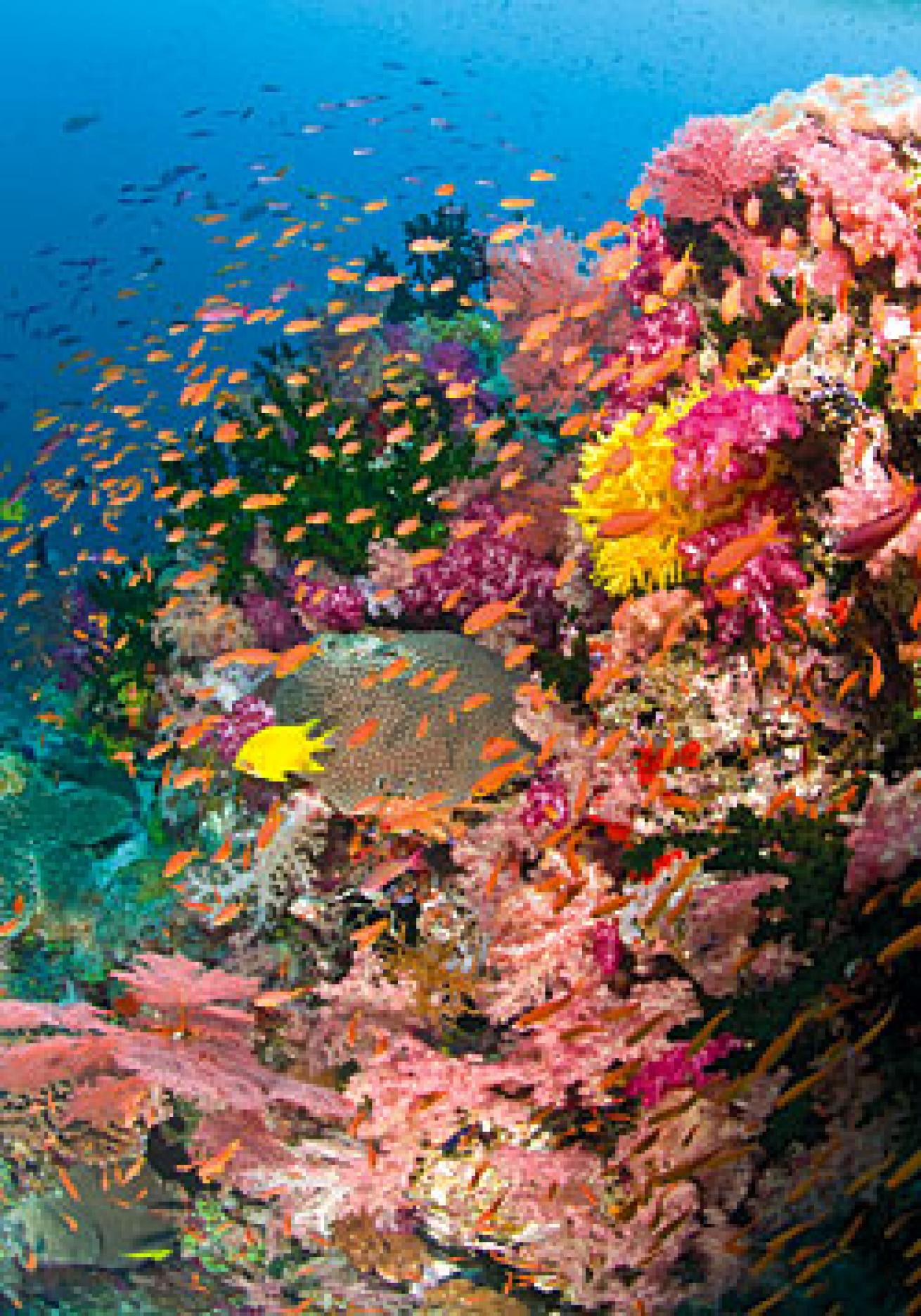
Dive Drill: Because of the speed and quickly changing nature of the currents, most dives are conducted as live-boat drifts, so you won't have to find your way back to the entry point at the end of the dive. When diving the Namena Preserve make sure you've got $25 Fijian on hand to pay for a permit.
Pacific Harbour, Suva and Beqa
Beqa (pronounced BENG-guh) is an island offshore from Pacific Harbour, a coastal town on southern Viti Levu and the main center of topside activities. Live-aboards depart from nearby Suva, the capital city of Fiji, and head east to the Lomaiviti islands. Day boats from Pacific Harbour and Beqa share the coral bommies in the 100-square-mile Beqa Lagoon. These pinnacles pulse with psychedelic pink, orange and red soft corals, and the lagoon is ringed by a 40-mile-long reef, so there is no shortage of sites to choose from. The traditions of the Fijian shark god, Dakuwaqa (see sidebar at right), still hold sway in this part of the islands, so it should come as no surprise that shark-feeding dives are a big attraction, consistently delivering gray reef, silver-tip, bull and tiger sharks in large numbers. Even when these feeds take place in deep water on sites like Combe Reef and the aptly named Shark Reef, you may still encounter some sharks cruising among the shallower bommies.
Dive Drill: The diving in this part of Fiji is rarely deeper than 85 feet, but currents can be extremely strong in these waters. Pinpoint buoyancy and strong swimming are essential skills. Shark dives are also current-swept and usually require divers to ascend and descend on a mooring line.
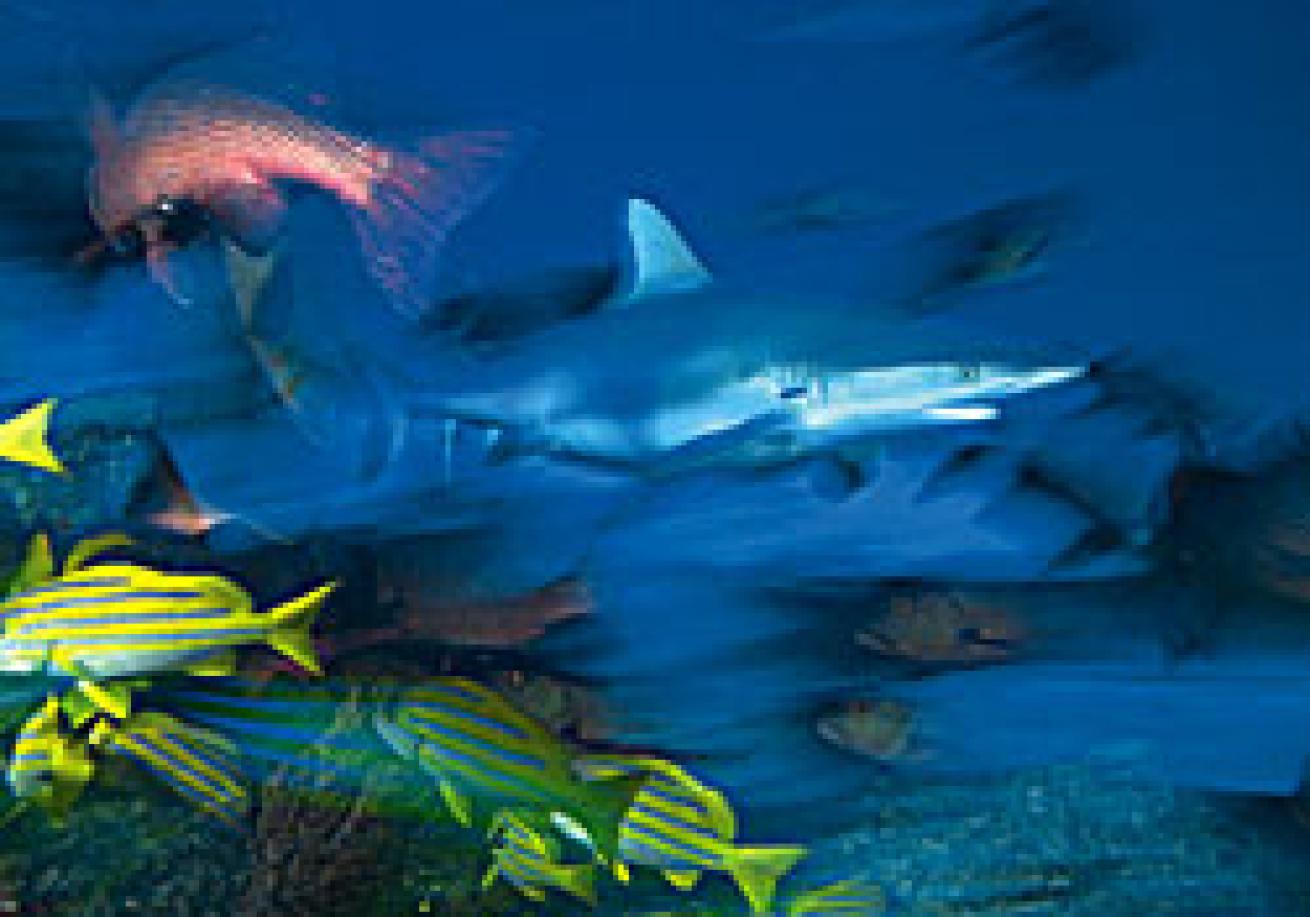
Can't-Miss Fiji Dives
Lomaiviti Islands
Jim's Alley
This site features a trio of coral bommies that come within 15 feet of the surface. It's named for underwater photographer Jim Church and, with a maximum depth of about 70 feet, offers plenty of bottom time and an abundance of photogenic subjects including large mantas and sea snakes.
Nigali Passage
Timing is everything when you dive this narrow cut in the reef found on the southeast corner of Gau. For the best conditions and visibility, dive as close as you can to low tide. White-tip and gray reef sharks, barracuda, giant bumphead wrasse and schooling trevally populate the pass. Near the surface there's also a stunning garden of lettuce-leaf coral.
Makogai Island
This series of small bommies, topping out at 10 to 15 feet with a 60-foot maximum depth, is a textbook example of a healthy Fijian reef. It's also a good place to see lionfish, turtles and white-tip sharks.
Bligh Water
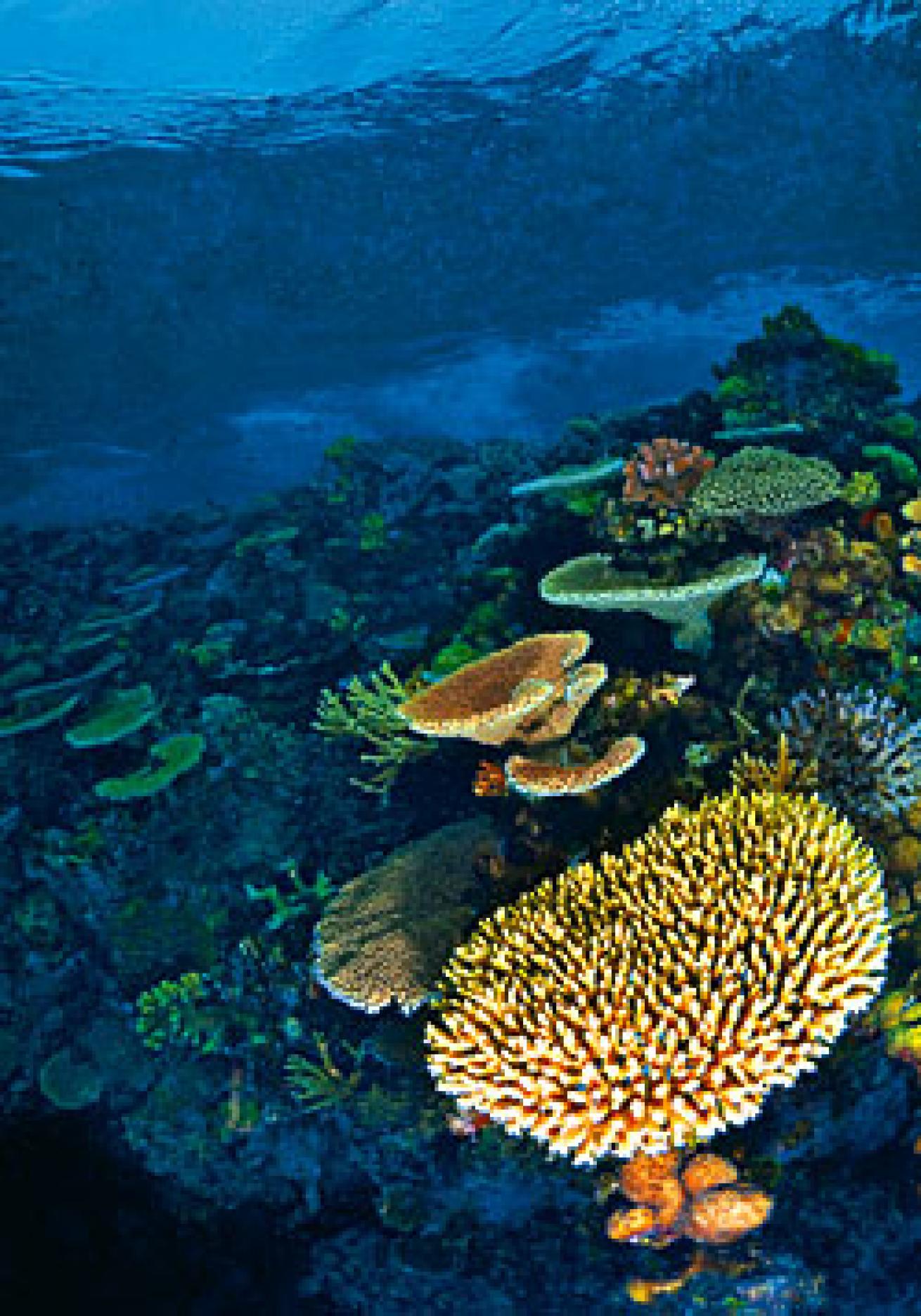
E-6
Back in the day, before there were digital cameras, the slide film of choice among serious underwater shooters was called E-6, and a lot of it got burned on this explosively colorful reef. The site features a pinnacle that rises almost to the surface from 3,000-foot depths, but the can't-miss feature is a horseshoe-shaped coral cavern. Keep an eye on the deep blue, and you might also get a shot of a hammerhead or silver-tip shark.
Maytag
This eye-popping dive is named for potentially turbulent currents and needs to be timed right. When it's "on," you'll be speechless. There are soft corals of every color and lots of fish and gray reef sharks patrolling along the edge of the drop-off.
Mount Mutiny
Bring a wide-angle lens for this deep-pinnacle dive that's great during the day but even better at night. Ask your guide to show you the area of the pinnacle between 60 and 120 feet known as Rainbow Wall, which is unusually heavy with thin, but colorful, Chironephthya soft corals.
Vanua Levu and Taveuni
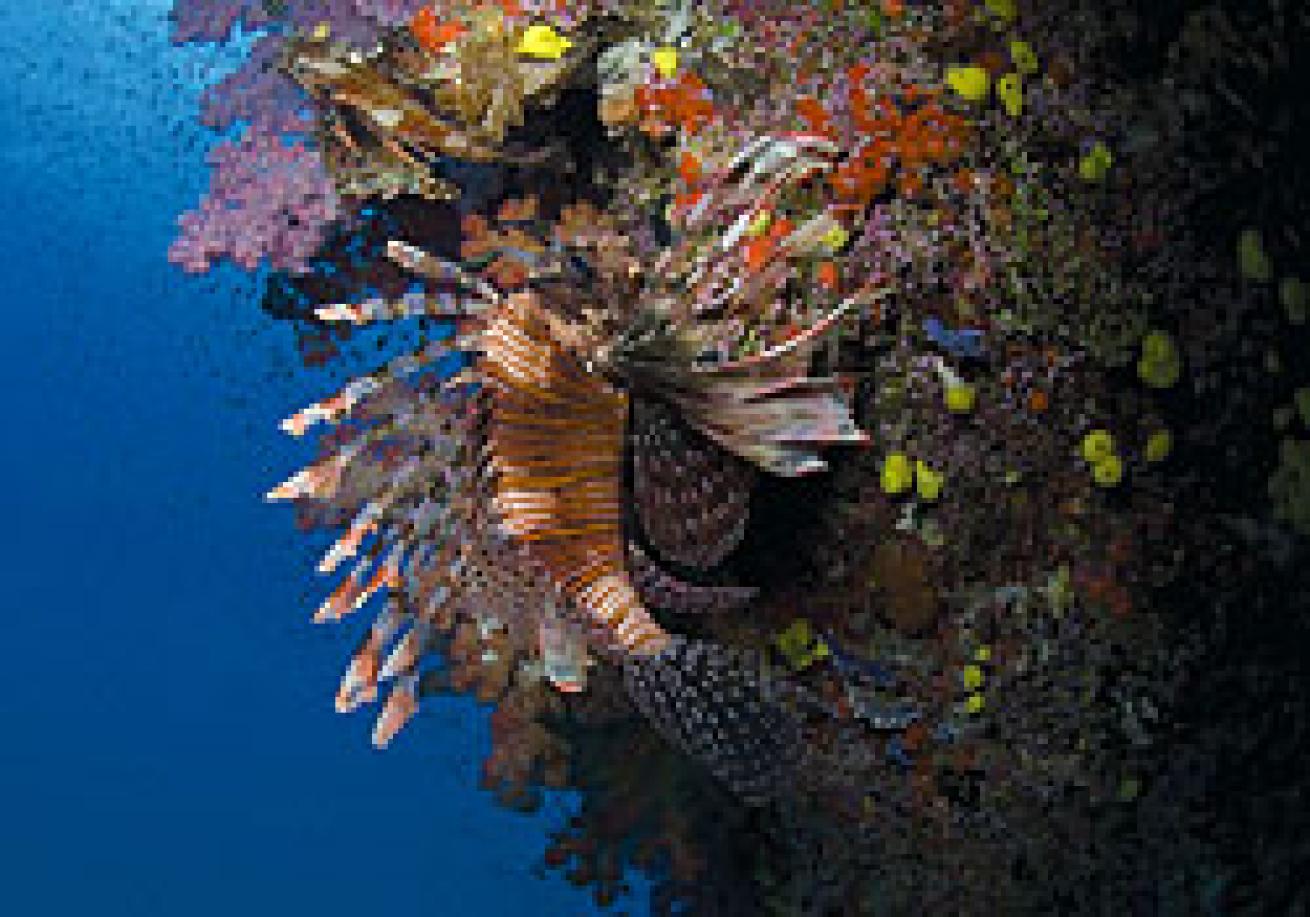
Grand Central Station
This site requires a special permit to dive. It's a channel with a series of pinnacles and seamounts within a marine-protected area. Look for fish endemic to Fiji, such as the bicolor rabbitfish and the canary fangblenny.
Great White Wall
The signature dive of the Somosomo Strait starts in a spacious, coral-decorated tunnel at 40 feet, which leads to another world at 80 feet: a vertical wall completely covered in white soft corals. Look for lionfish and morays on the upper portions of the wall.
Kansas
This bommie rising from 70 to 15 feet is part of the Namena barrier reef, off Vanua Levu. It's named for the Sinularia coral covering that looks like waves of wheat fields. Words can't do it justice. It must be seen firsthand to be truly appreciated.
Beqa/Pacific Harbour
Side Streets
Coral bommies and overhangs laced with tunnels and caves characterize the southern lagoon off Viti Levu. You'll find huge sea fans and feather stars as well as lionfish, batfish and schooling jacks.
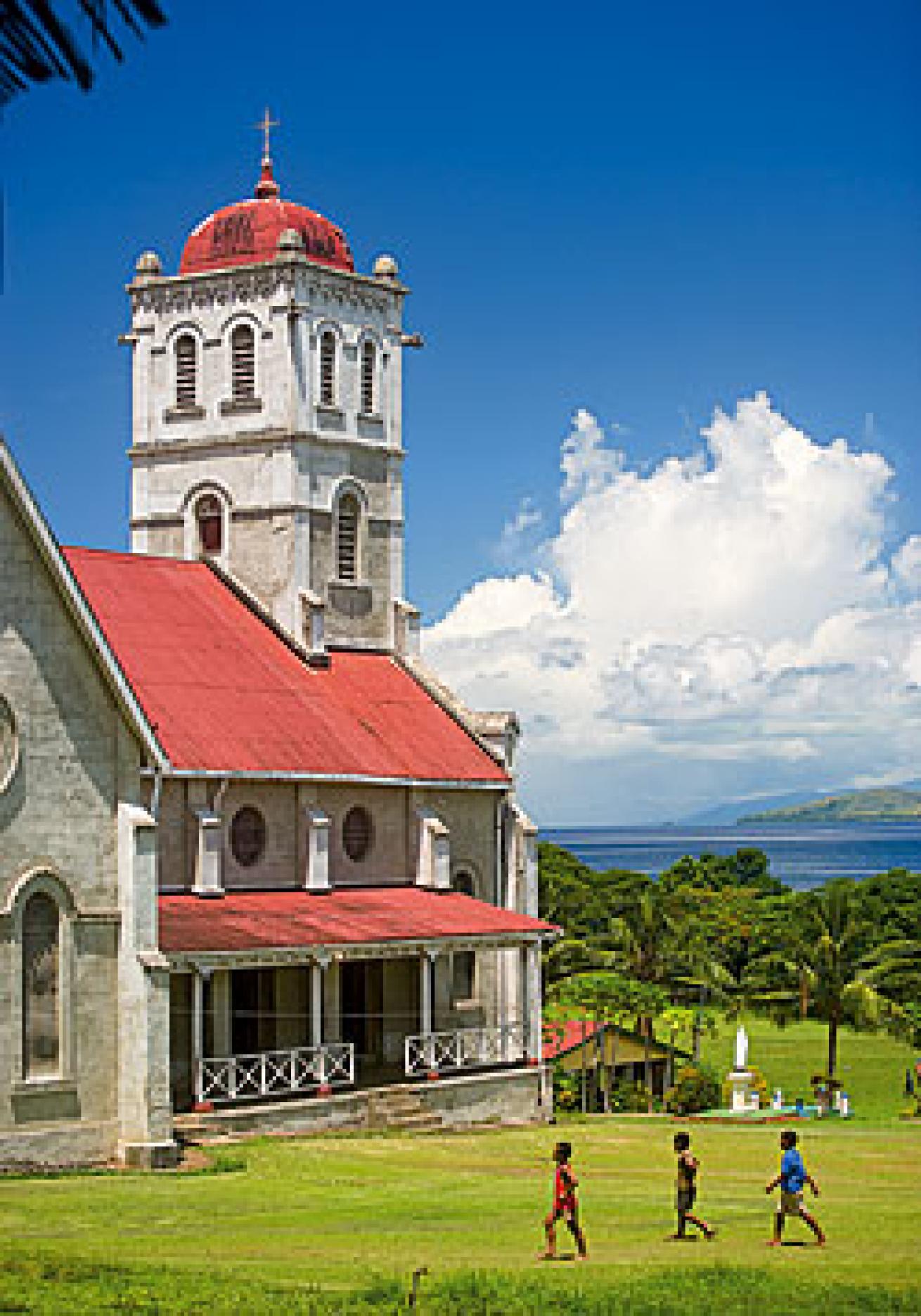
Fijian Culture
Dakuwaqa the Shark God
Even by the tough yet calm standards of shark wranglers the world over, Fijian shark feeders seem unusually fearless and skilled in the face of toothsome apex predators. Perhaps there is something to the Fijian legend that says one of the warrior gods, Dakuwaqa, takes the form of a shark. Fijians traditionally don't eat shark meat, so the rule is fairly simple: Don't bite the sharks and they won't bite you.
Visiting Villages
Whether you're diving with a land-based resort or by live-aboard, no trip to the islands is complete without a village visit to get a glimpse of traditional Fijian life. Many villages are still very much rooted in centuries-old customs, so out of respect it's wise to ask the resort or live-aboard staff about getting permission to visit. It's good form to bring a gift for the village. School supplies for kids or yaqona root to make kava for the adults are always appreciated. Here are more tips for getting to know your hosts:
Say "Bula." Fijians are exceptionally friendly and it's very common to be greeted with a smile and the word "bula." It's appropriate to respond in kind.
Dress for Success. Women should dress conservatively and cover their shoulders and knees. Men may wear a sulu, a wraparound cloth Fijian men wear around their waists. Ask for help to properly tie it.
Mind Your Manners. Fijian culture holds that the head is connected to heaven, so it's best not to wear hats, touch people's heads or ever pass anything over someone's head (thus breaking their connection to heaven). While sitting on the floor, pointing the soles of your feet at either the village chief or the kava bowl is considered poor etiquette. Finally, in formal ceremonies, the chief's head should always be the highest point, so if you're tall, crouch and make sure the chief sits on a raised seat so his head is always above everyone else's.
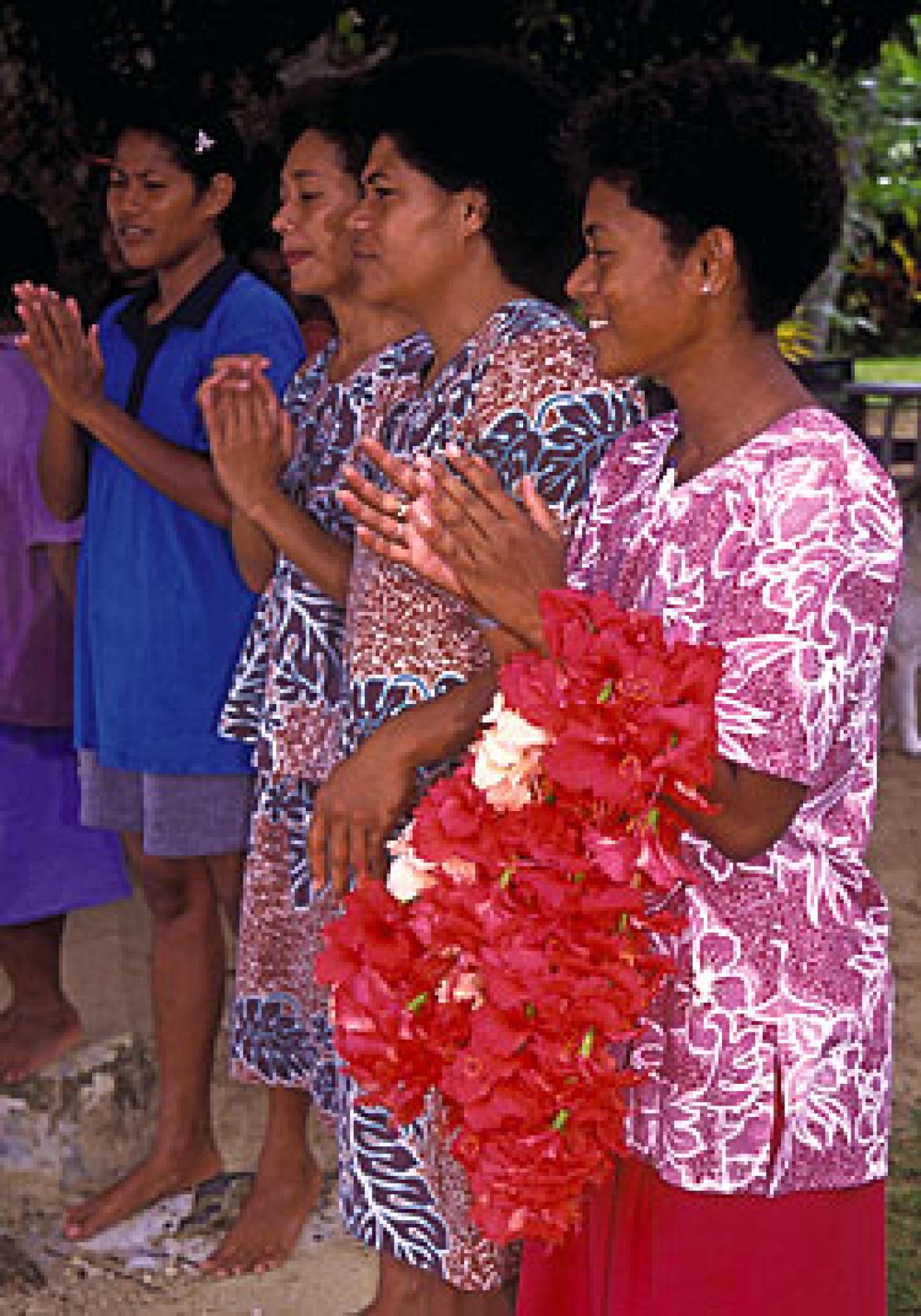
The Kava Ceremony
Drinking kava is one of the foundations of Fijian life and during your visit you should definitely join in the ritual. For the uninitiated, kava is a mud-colored beverage made from the root of the yaqona (yahng-GO-nah) pepper plant. It has a mildly anesthetic effect so your lips may tingle or feel a bit numb when you try it. It's an honor to be invited to join a kava ceremony, so you'll need to down at least one cup, but since the mixture tastes like soapy water, it's OK to say no vinaka after the first round. Traditions surrounding the practice of drinking kava vary around the country, but in general the highest-ranking person gets the first cup. Asking for a "high tide" or a "low tide" will determine if you get a full cup or a smaller portion. Before accepting the bilo (a coconut shell cup) clap once. Your clap should sound deep and hollow. This is best done by cupping your hands and clapping rather than smacking your palms together. Then, drink the cup in one go. After that, clap three times. If you do it with gusto, don't be surprised if you get a cheer.
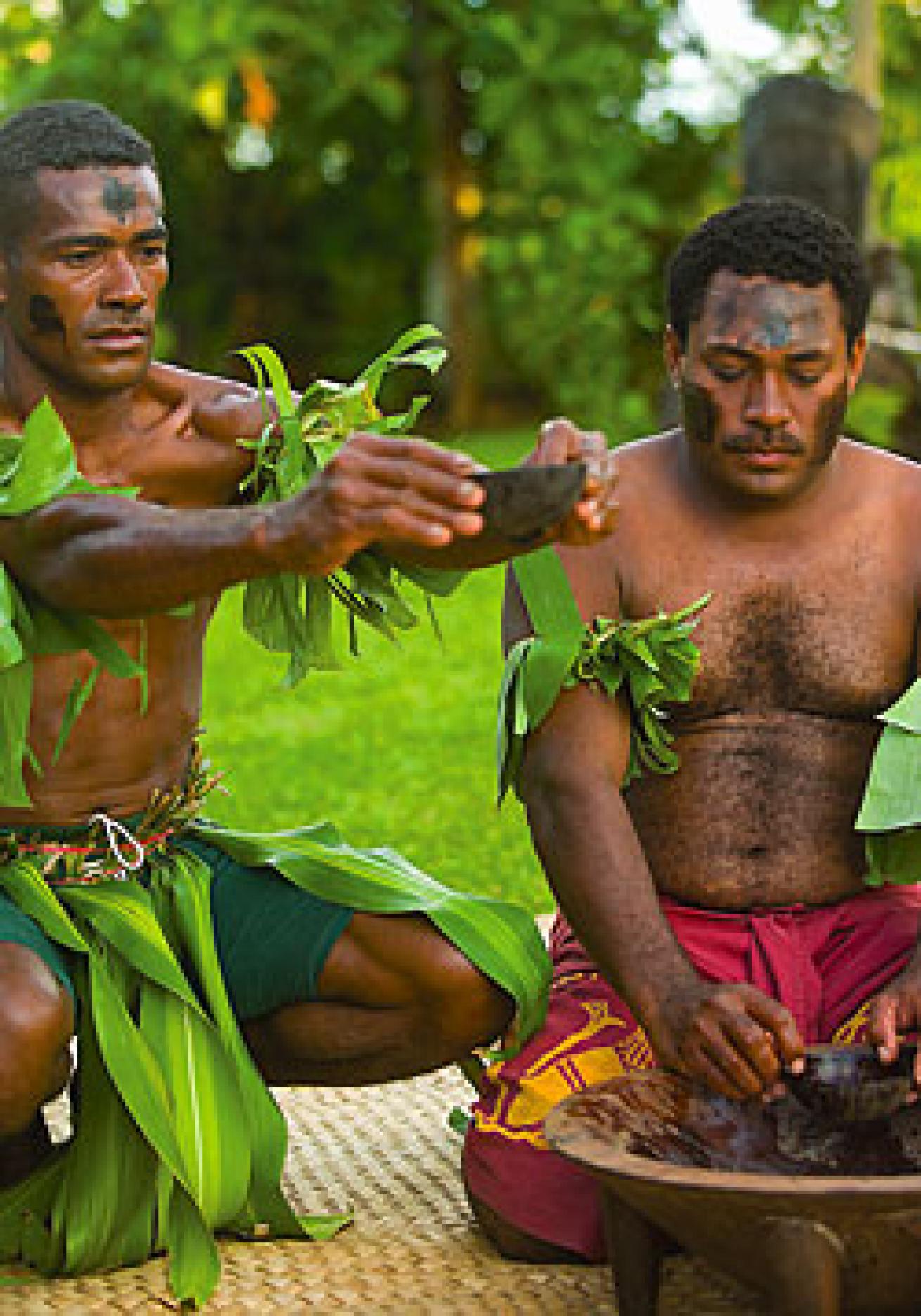
Beqa Firewalkers
The island of Beqa is unique in Fiji as the home of firewalkers. Legend says the Fijian warrior Tui-na-viqality was given immunity from fire for saving the life of a spirit god. The immunity was passed down to his descendants, the Sawau tribe of Beqa, who, legend says, maintain their firewalking ability. In preparation for a firewalking ceremony, an entire village would prepare for an entire month beforehand (it has since been reduced to several days). Firewalkers abstain from sex and eat no coconut prior to performing. Men whose wives are pregnant are not allowed to participate. Watching these men walk barefoot across 15 feet of hot stones covered with coals strains your brain--and your feet--to imagine. It's a tradition that has been passed down through the generations and worth checking out. If you aren't staying on Beqa, the Pacific Harbor Cultural Center, on Viti Levu, also hosts performances each week, as do some of the larger Fijian resorts.
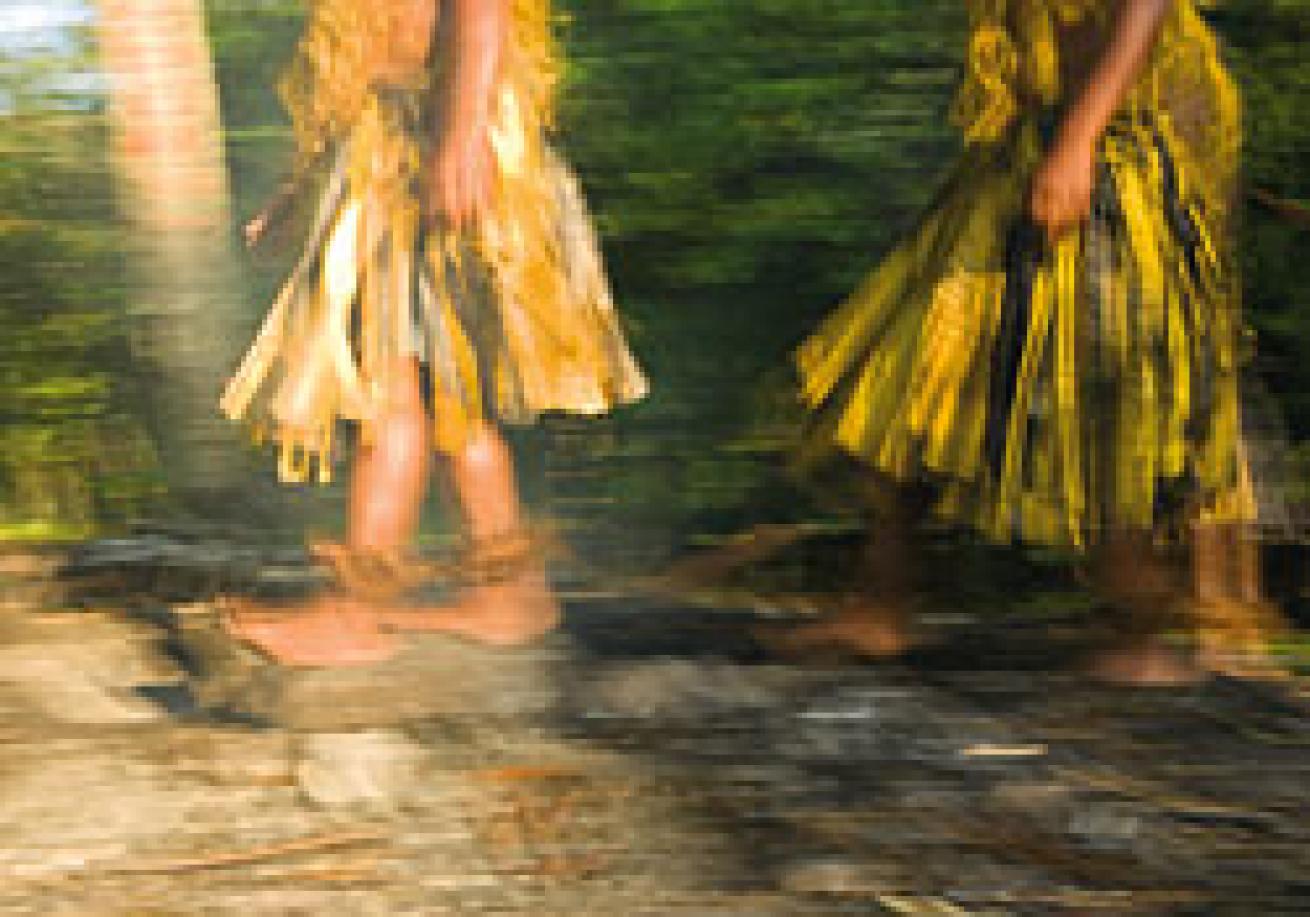
InDepth
Water Conditions: Pack a safety sausage in your dive bag--Fiji has major-league current and serious tidal changes. Water temps can drop to 75 degrees. If you get chilled easily underwater, you'll need at least a 3mm wetsuit; some divers even wear 5- to 6mm suits with hoods. During the rainy season, water temps can climb into the low 80s.
Weather: Conditions can vary considerably by island region, but generally, winter (June through October) is the best time to visit--it's drier, cooler and far less humid than the rest of the year. Winter air temps range from the 70s to the 80s. During the December to March rainy season, temps are a bit higher, ranging from the upper 80s to the mid-90s.
Getting There & Around: Nonstop flights to Nadi (NAN) originate in Los Angeles (LAX). Most resorts are located away from the main island in secluded areas, so plan on an additional flight or boat ride once you land in Nadi.
Entry Documents: U.S. and Canadian citizens need a passport valid for more than three months from their date of entry, plus a return or ongoing ticket. U.S. and Canadian citizens do not need a visa.
Money Matters: Local currency is the Fijian dollar. At press time, US$1 was worth about F$2. Credit cards are accepted at larger hotels and resorts. There is a F$30 departure tax (children under 12 are exempt).
Accommodations: Generally, resorts offer bure accommodations, traditional thatched-roof bungalows or cabins.
Language: English, Fijian and Hindustani are all official languages.
Time: Fiji is 20 hours ahead of Los Angeles and Pacific Standard Time, 17 hours ahead of New York and Eastern Standard.
Electricity: 240 volts, with three-pronged, Australian-type outlets. Some resorts and live-aboards use 110 volts or provide converters.
Local Area Code: (011) 679.
Just In Case: A recompression chamber is located on Suva.
For More Information: To read past Scuba Diving travel guides on Fiji, go to www.scubadiving.com/travel/pacificandindianoceans/fiji.


